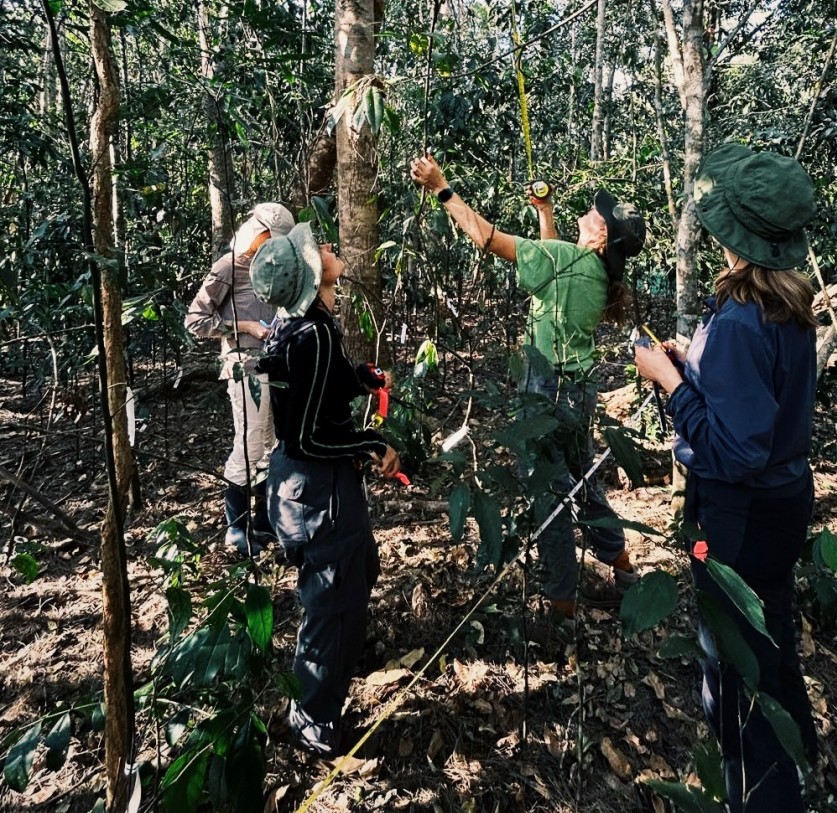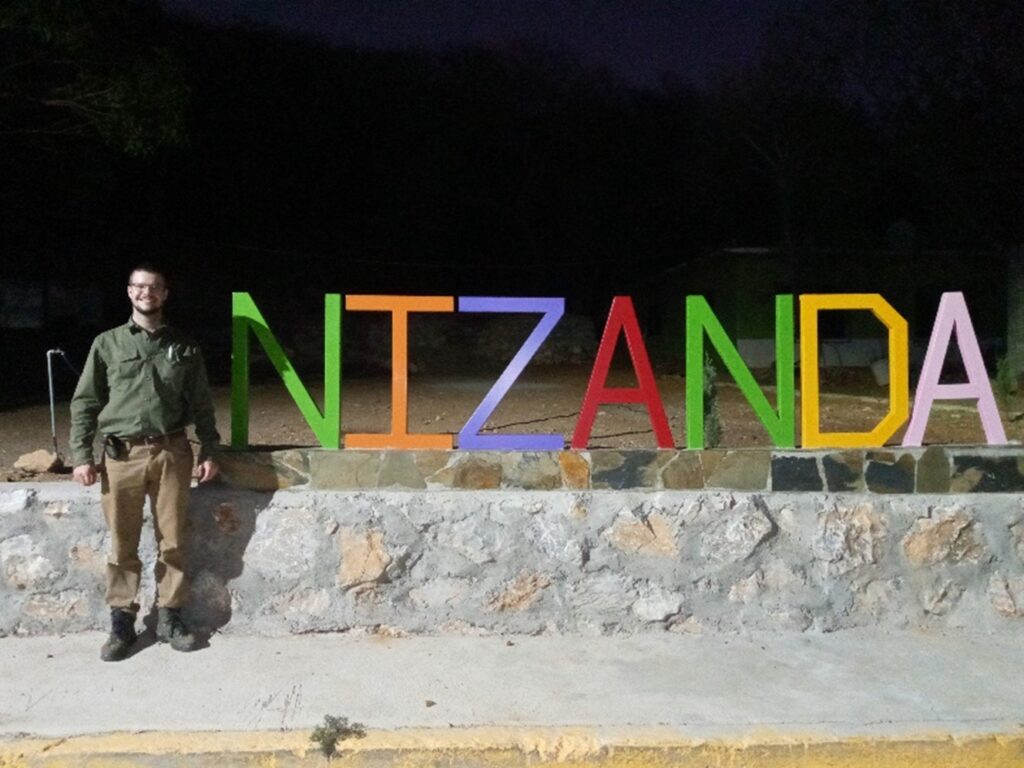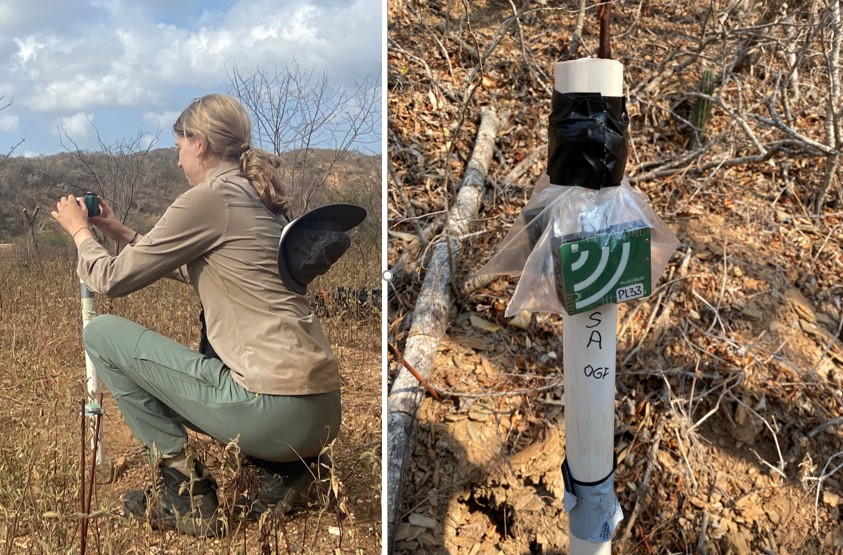Nicole Del Greco: How do landscape context and patch characteristics shape natural regeneration and microclimate in abandoned tropical pasture?

Wageningen University & Research Tropical forests play a crucial role in mitigating climate change and preserving biodiversity. However, the increase in deforestation has resulted in the conversion of land for agriculture, leading to the expansion of secondary forests that cover over 70% of the forested areas in the tropics. As the landscape becomes increasingly human-modified, […]
Madelon Richmond – Gymnadenia species recognition and harvesting methods

Radboud University Nijmegen In het veld is het vaak moeilijk om pure en hybride orchideeën te onderscheiden, wat de zaadverzameling voor de Nationale Zadencollectie, Het Levend Archief, bemoeilijkt. Er is veel kennis omtrent het herkennen van orchideeën en het bestuderen van hun morfologie, echter de grote variëteit binnen en tussen genera maakt het lastig één […]
Jade Kandelaar – Getting to the roots: exploring the root economic space in tropical ecosystems

In de zomer van 2024 reisde ik af naar Costa Rica om onderzoek te doen naar de boomwortels van tropische bossen. Samen met een mede-student werkten we in het Santa Rosa National Park, waar we de wortels van meer dan 100 bomen en 20 verschillende boomsoorten hebben opgegraven. Het was fascinerend om meer inzicht te […]
Annika van Gelder – Tropical forest restoration in Queensland, Australia: motivation, management practices, and outcomes

In de vorige eeuw heeft Noord-Queensland, Australië, te maken gehad met grootschalige ontbossing. Tegenwoordig zetten veel landeigenaren en organisaties zich in om dit (gedeeltelijk) te herstellen door bomen terug te planten. Om inzicht te krijgen in welke soorten onder welke omstandigheden goed presteren, ben ik naar de Atherton Tablelands gegaan om nieuwe monitoring plots op […]
Felix Niessen – The Effect of Landscape Forest Cover on Local Seed Abundance and Richness in a Mexican Dry and Wet Forest

Human activities such as logging, agriculture, and shifting cultivation have caused significant forest cover loss across the globe. When agricultural lands are no longer productive, they are often abandoned, leading to a process known as secondary forest succession, where natural forest recovery begins. This research is part of the EU-funded PANTROP project, which explores the […]
Berber Zandstra – Discovering species diversity and ecology of Sabah’s Aristolochiaceae

Wageningen University & Research – Leerstoelgroep Biosystematiek De Aristolochiaceae (pijpbloemen) familie vormt een belangrijke waardplant voor de kwetsbare Kinabalu vogelvlinder (Troides andromache) in Sabah (Maleisisch Borneo). De lianen van Aristolochia soorten worden door de inheemse volken van Sabah gebruikt voor medicinale doeleinden. Hoewel deze plantenfamilie een belangrijke ecologische en medicinale functie bekleedt, is er niet […]
Tom Veldhuis – De rol van visuele signalen in de seksuele deceptie door Ophrys orchideeën

De signalen die door bloemen gebruikt worden om bestuivers aan te trekken zijn niet alleen cruciaal voor de werking van de voortplanting van de bloem, maar zijn ook een sterke drijfveer van biodiversiteit. Een erg bijzonder geval van deze signalen zijn de deceptieve signalen van Ophrys orchideeën. Deze bloemen imiteren de geur- en kleursignalen van […]
Roosje Kemmink: Climate-growth interaction of trees in tropical Australia

Voor mijn onderzoek naar de invloed van klimaatomstandigheden op tropische boomgroei, heb ik in een team met 5 veldmedewerkers boomkernen geboord van Toona ciliata in het uiterste noordoosten van Australië. Doormiddel van hout bestuderen kun je de groeigeschiedenis van decennia lang terugzien, op deze plek is nog nooit eerder dit type onderzoek gedaan, dus ik […]
Thomas van Schaik: Assessing the relationship between avian seed disperser communities and the recovery and resilience of Mexican dry tropical forest

Universiteit Utrecht Tropical forests support much of Earth’s biodiversity and play key roles in carbon storage and the global water cycle. However, rapid deforestation and climate change threaten these functions, causing significant biodiversity loss. Despite these challenges, forest recovery after disturbances and exploitation offers a chance for negative carbon emissions. Understanding conditions for successful forest […]
Vera Renne: Assessing the relationship between avian communities and regeneration of dry tropical forests in Mexico using passive acoustic monitoring

Universiteit Utrecht Tropical forests, are home to over half of the world’s terrestrial biodiversity and are essential for regulating water cycles and providing global ecosystem services. However, these ecosystems face escalating threats, pushing them towards their resilience limit. Natural regeneration is crucial to their survival, and birds play a vital role in this process. By […]
